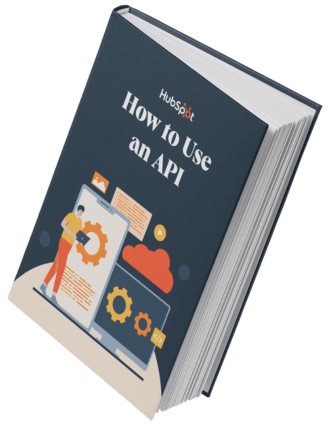Yet, sometimes you’re forced to decide between REST and SOAP APIs if the service provider supports both. The same applies to API development, where you expose functions in your app for other developers to use. Such decisions deserve careful consideration, because making the wrong choice can delay projects. From my experience, it's better to anticipate potential challenges with API usage early on than to fix technical incompatibilities later.
The question is: What do you base your decision on when choosing an API to work with?
Well, that’s what this guide is all about — helping you compare both API types and decide which suits your project.
(I know, for non-developers, comparing both REST and SOAP APIs can be daunting. So, let’s start with the basics before diving deeper into the details.)
Table of Contents
- What is an API?
- What is REST API?
- What is SOAP API?
- How does REST API work?
- How does SOAP API work?
- REST vs SOAP API: Key Differences
- When to use REST API
- When to use SOAP API
What is an API?
An application programming interface (API) is a standard method that allows different software systems to exchange data without exposing their internal codebases.
Let’s say your website needs to transact a payment through Stripe. With an API, you can pass the payment data to Stripe’s payment gateway without needing to understand how the latter works at the source code level.
Otherwise, you’ll end up spending hours reading technical documentation like me just to find out the proper functions and format to exchange data with third-party services.
For context, I worked with low-level data packets in my engineering days. While SOAP and REST were already introduced, they weren’t widely adopted yet. Moreover, back then, neither API type was widely used for electronic products, which means I still needed to do heavy lifting when getting microcontrollers to communicate with desktop-based applications.
With REST, you can use JSON, HTML, XML, or plain text to transfer web data. One of REST’s hallmarks is the way it standardized data operations through a uniform interface. To manipulate data, all you need to do is familiarize yourself with the GET, PUT, POST, and DELETE commands.
Additionally, REST employs a stateless model, which means that each data request is treated independently.
While some would prefer REST’s more flexible use of JSON, I’m more comfortable with the structured way SOAP’s messages are defined in XML. They reminded me of the low-level functions I use to expose features in my software.
Many enterprise applications use SOAP APIs because they’re highly secure, thanks to WS-security standards. Additionally, SOAP can support ACID-compliant transactions. ACID stands for atomicity, consistency, isolation, and durability. They are important characteristics that ensure data integrity, particularly in transactional applications like a banking app.
How does REST API work?
REST API sends data requests at the HTTP layer. It allows websites to access server resources that are organized around a specific URL using HTTP methods. When making API requests, web applications send the content in a JSON data packet.
Below, I’ll share a typical request-response cycle for an ecommerce site updating product information:
1. The website creates a PUT HTTP request and sends it to website/api/product/ID123.
2. The server listens at the API endpoint, which in this case, is website/api/product/ID123.
3. Upon receiving the request, the server updates the database with the received content.
4. The server returns a successful response, usually HTTP 200 OK or HTTP 204 No Content, to the website.
How does SOAP API work?
SOAP API can operate on different protocol layers, including HTTP/HTTPS, TCP, JMS, and SMTP. This means that you can use SOAP not only on websites, but also on custom applications that exchange data with other services, applications, or devices.
Here’s how data exchange between a client and server application takes place in a SOAP API:
1. The client wraps the SOAP message with an XML envelope. Then, it sends the entire data packet with the chosen transport protocol. For websites, SOAP is included in the HTTP transmission.

2. The server receives the SOAP request. From there, the server validates the message structure to ensure it’s intact.
3. Then, the server extracts the specified command and data. For example, the command for updating product info is UpdateProd.
4. Next, the server application processes the request, and in this case, updates the inventory for the particular product.
5. Lastly, the server wraps and sends a SOAP response, using designated methods, such as UpdateProdResult.

REST vs SOAP API: Key Differences
Now that you’ve got a good idea of how both REST and SOAP work, let’s explore the differences between the APIs.

Security
REST mainly relies on HTTPS to secure the message it carries at the transport level. Although not common, you can also secure REST API calls with message-level authentication and authorization measures like JWT tokens, OAuth, or custom headers.
If you want a more robust security mechanism, you’ll need to implement it at the code level. For example, in one of my past projects, I encrypted the data packets with AES-256 before transporting them with HTTPS.
SOAP, meanwhile, protects messages with security standards defined by the Web Services (WS) specifications. Unlike REST, SOAP’s built-in security acts at the message level, which means I can send the messages without needing to implement additional security measures, such as encryption.
If you use SOAP API, you can use several WS standards to secure the underlying message, including:
- WS Security for encryption, authentication, and digital signature to provide end-to-end security.
- WS ReliableMessaging to ensure data is delivered consistently across the network.
- The WS Federation allows the application to use resources in other services without requiring re-authentication.
Together, these security measures ensure that only the legitimate application can decode and read the message.
Now, I wouldn’t proclaim SOAP is more secure than REST. Rather, I’ll say that SOAP has more security options to work with, which makes it ideal for enterprise applications that require fine-grained security. As for REST, its simplicity can be an advantage in securing modern web apps.
Protocol Design
REST treats all information that an application wants to manipulate as resources. It leverages the same HTTP methods that websites use to communicate with the backend servers, namely GET, POST, PUT, and DELETE.

SOAP, on the other hand, focuses on methods and actions. It exposes custom functions created by developers to perform a specific task.

Another way to differentiate REST and SOAP is to think of what you want to do vs. how you want to do.
Personally, I find SOAP similar to Remote Procedure Call, a method I used when building a point of sales system that involves several layers of client-server communications.
Data Transfer
SOAP exclusively uses XML to store, send, and receive information. On top of that, SOAP messages are formatted in a way that non-developers might find hard to understand. Typically, a SOAP message consists of a header and body. When responding to a request, the server may also include a response field in the message.
Meanwhile, REST is more flexible, supporting formats like JSON, HTML, XML, and plain text. That said, most web applications use JSON because it’s lightweight and easily readable by humans and applications.
For example, below is a JSON snippet showing the same product information listed in the above SOAP message.
You can also send image, audio, and video files more easily with REST. On the other hand, you need to encode rich media when you transfer it with SOAP.
Performance
SOAP messages are structured with header and body elements, which require more bandwidth compared to REST. Moreover, the fact that SOAP uses XML as opposed to REST’s JSON also impacts performance. From the numerous networking projects I did, every header packet you use to encapsulate the payload (content) counts towards the overall information transfer rate.
Simply put, it takes more data packets to transfer the same information in SOAP than REST. This is a deal breaker if you are building web services for public usage or designing an application that requires a low-latency response.
And if you consider the fact that REST can cache GET responses for speedier retrieval, there’s no doubt that REST is a clear winner here.
Scalability
It’s much easier to scale REST API than SOAP APIs. REST, which uses JSON to transmit information, takes up less memory and computing power compared to SOAP’s heavily structured XML.
Moreover, REST is architected in a way that decouples clients and servers from each other. When you send requests with a REST API, the server treats each session independently. This is unlike SOAP, which needs to maintain the entire session until it is terminated.
Because REST is loosely-coupled, you can distribute REST requests to any servers, which is common in how blogs are served through content distribution networks (CDN). This is also why platforms like Google and Facebook use REST for public APIs.
Error Handling
REST doesn’t have a standardized error-handling mechanism. Instead, it communicates errors through HTTP status codes. Furthermore, the API developer has the flexibility to determine how various errors are communicated. For example, below is an error response when the server can’t find the information of a specific customer.

With SOAP, error handling is built into the protocol. This means that there is a definite way to convey an error consistently across all API implementations. As you can see, the code snippet below shows how SOAP returns the same error response.

When to Use REST API
REST excels when you need to build scalable, simple, and high-performance web applications or services.
I suggest using REST for these applications.
Web and Mobile API
When you build web or mobile applications, you will most likely use third-party services via a public-facing API. Or, if you’re building server-side applications, you will need to expose functions to other developers through an API.
In both cases, REST is better because it's generally lightweight, both in terms of data packet size and implementation.
Microservices
Microservices are self-contained functions that you can deploy on the cloud. Most modern cloud apps are based on the microservices architecture. Each microservice is responsible for a specific task and exchanges data with other microservices to support the application. For example, a ride-hailing app interacts with several microservices for location positioning, customer record management, driver notification, and payment.
These microservices require a fast, flexible, and scalable data exchange interface that REST provides.
Content Distribution
REST is also ideal for building and horizontally scaling a content platform, thanks to its stateless nature and caching capabilities. Horizontally scaling means adding more servers to avoid traffic bottlenecks. This way, instead of directing all requests and serving content from a single server, you can distribute the load through a CDN.
When to Use SOAP API
SOAP, despite being more rigid and complex, can be helpful when you’re working on web services or applications that require consistency, reliability, and robust security.
Consider choosing SOAP when your project needs these requirements:
Enterprise-Grade Security
If security is your top priority, choose SOAP. The reason is simple: SOAP secures your message with comprehensive WS standards.
Unlike REST, SOAP messages are secured from end to end without additional security measures at the application level. This means that even if the message was redirected through intermediary servers, they are still secure.
ACID-Compliant Transactions
Some applications prioritize data consistency guided by ACID principles. For example, if you’re building a banking app, ACID ensures that multiple transactions can be performed reliably, despite taking place concurrently, without impacting data integrity.
In this case, SOAP is the API of choice because of its ACID support, when used with the WS standards like WS-Atomic Transaction.
Legacy System Integrations
You should use SOAP if you’re building an app to integrate with legacy systems that are already using the same API. Compared to revamping or modernizing the existing system, SOAP integration is less risky.
Now you know which API to choose.
There are no strict rules that favor one API over the other. Every web and app development project has different security, performance, and data architecture requirements. So, the best decisions take all the factors I mentioned into account and go by these general guidelines:
- REST API helps you build fast, responsive, and scalable web and mobile apps.
- SOAP API is suitable for applications that require strict security and data governance.
Editor's note: This post was originally published in September 2021 and has been updated for comprehensiveness.







![How to get a YouTube API key [tutorial + examples]](https://53.fs1.hubspotusercontent-na1.net/hubfs/53/%5BUse%20(1)-4.webp)







